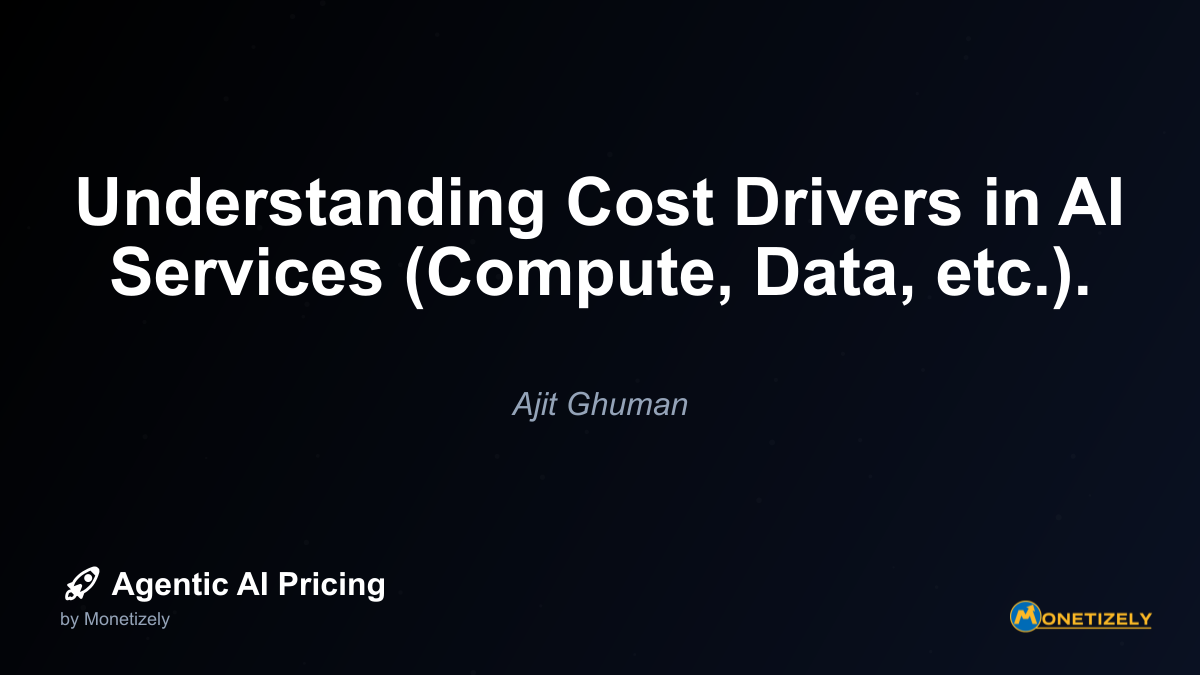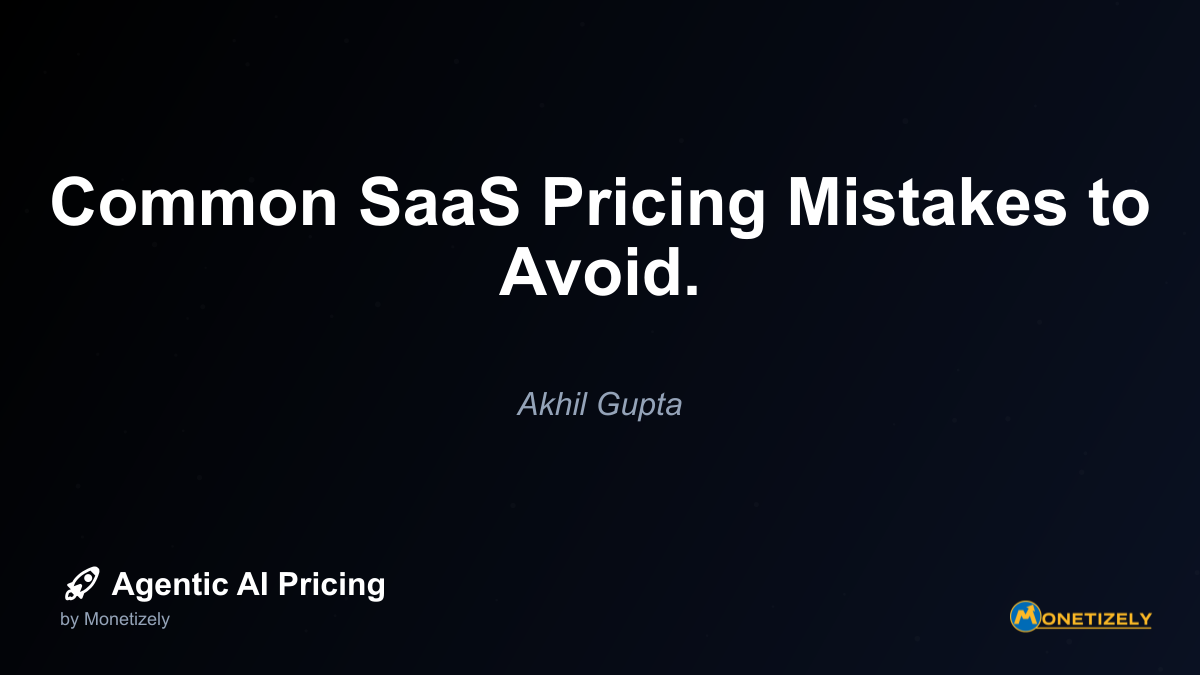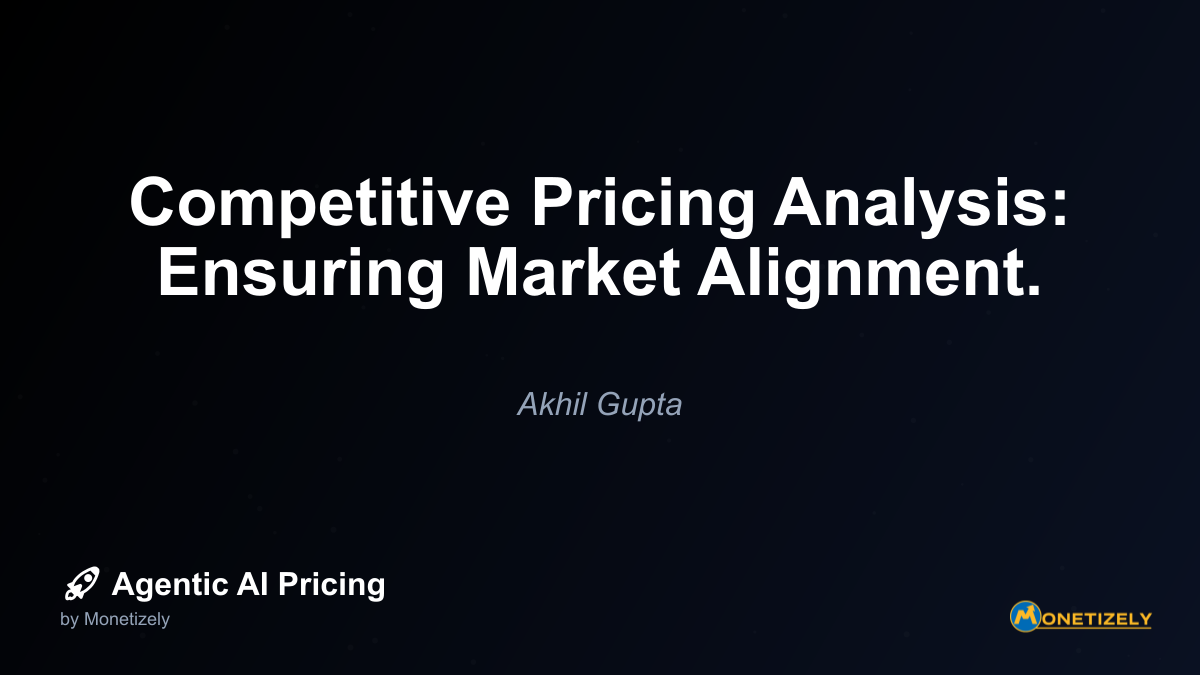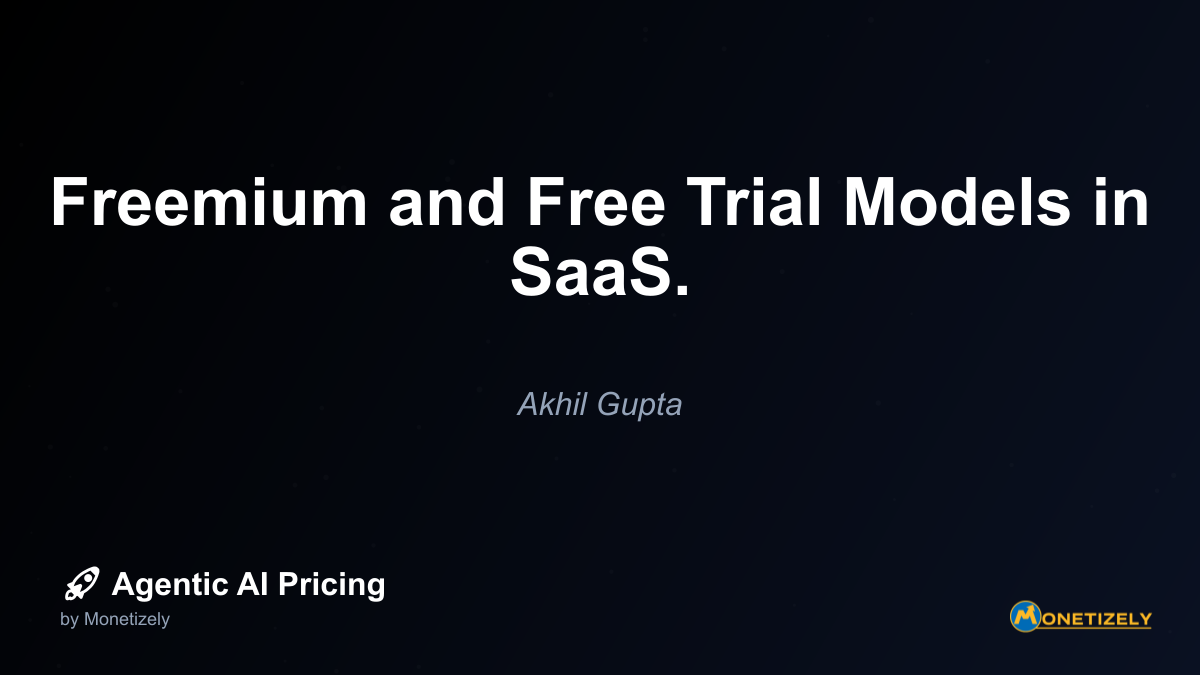· Ajit Ghuman · Pricing Fundamentals · 9 min read
Understanding Cost Drivers in AI Services (Compute, Data, etc.).
AI and SaaS Pricing Masterclass
Learn the art of strategic pricing directly from industry experts. Our comprehensive course provides frameworks and methodologies for optimizing your pricing strategy in the evolving AI landscape. Earn a professional certification that can be imported directly to your LinkedIn profile.

The world of artificial intelligence services is evolving rapidly, bringing powerful capabilities to businesses across industries. However, behind these transformative technologies lies a complex cost structure that directly impacts how AI products are priced in the market. Understanding these cost drivers is essential for both providers and consumers of AI services to make informed decisions about pricing strategies and technology investments.
The Foundation: Core Cost Drivers in AI Services
AI services represent a unique category of technology products with distinct cost structures compared to traditional software. While conventional SaaS products typically have predictable infrastructure costs that decrease with scale, AI services often involve variable expenses that can fluctuate significantly based on usage patterns and complexity of tasks.
Compute Infrastructure: The Processing Powerhouse
At the heart of every AI service is computational infrastructure – the hardware and software systems that execute the complex calculations required for AI models to function. This infrastructure represents one of the most significant cost components in AI service delivery.
Cloud Computing Costs
Most AI services rely heavily on cloud computing resources, which typically follow a consumption-based pricing model. These costs include:
- Server instances: The virtual machines that run AI workloads
- GPUs and specialized hardware: Accelerators that dramatically improve performance for AI tasks
- Networking costs: Data transfer between services and to end-users
- Serverless computing fees: Pay-per-execution models for certain AI functions
The scale of these costs can be substantial. Training large language models (LLMs) like GPT-4 can cost millions in compute resources alone. For example, estimates suggest that training GPT-3 cost OpenAI approximately $4-5 million in compute resources, while GPT-4 likely cost substantially more.
On-Premises vs. Cloud Trade-offs
While cloud resources offer flexibility, organizations with consistent, high-volume AI workloads may find that on-premises infrastructure provides cost advantages over time:
“For predictable, high-utilization AI workloads, on-premises infrastructure can reduce costs by 30-50% compared to equivalent cloud resources over a 3-year period, though this requires significant upfront capital expenditure and technical expertise.”
However, the upfront investment and ongoing maintenance costs make this approach viable primarily for larger organizations with specialized technical teams.
Data: The Lifeblood of AI Systems
Data represents both a critical input and ongoing cost driver for AI services. Several data-related expenses impact the overall cost structure:
Data Acquisition and Licensing
High-quality training data often comes at a premium. Costs include:
- Purchasing data from third-party providers
- Licensing fees for specialized datasets
- Data collection campaigns
- Human annotation and labeling services
For specialized domains like healthcare or finance, properly annotated datasets can cost hundreds of thousands or even millions of dollars to assemble.
Data Storage and Management
Once acquired, data must be stored, processed, and managed:
- Cloud storage costs (which scale with data volume)
- Database management systems
- Data processing pipelines
- Compliance and security measures
These costs tend to grow linearly with data volume but can increase exponentially when considering high-availability requirements, redundancy, and geographic distribution.
Data Quality and Preparation
Raw data rarely arrives in a format ready for AI consumption. Data preparation represents a substantial cost:
- Data cleaning and normalization
- Feature engineering
- Quality assurance processes
- Ongoing data refreshes and updates
Industry estimates suggest data scientists spend 70-80% of their time on data preparation activities, representing a significant portion of human resource costs in AI development.
Model Development: The Intelligence Factory
The process of creating and refining AI models represents another major cost center, encompassing both technical and human resource expenses.
Model Training Costs
Training sophisticated AI models requires substantial resources:
Computational Requirements
The computational demands of model training vary dramatically based on model architecture and dataset size:
- Simple machine learning models may train in minutes on standard hardware
- Deep learning models often require days or weeks on specialized GPU clusters
- Large language models can require months of training time on supercomputer-equivalent systems
As models grow in size and complexity, training costs increase exponentially. For instance, training a state-of-the-art computer vision model might cost tens of thousands of dollars in compute resources alone, while training the largest language models can run into millions.
Experimentation and Iteration
The path to an effective AI model is rarely linear. Development typically involves:
- Multiple training runs with different parameters
- Experimentation with various model architectures
- Hyperparameter optimization
- Validation against test datasets
Each iteration consumes additional compute resources, multiplying the base training costs. A typical commercial AI model might undergo dozens or hundreds of experimental iterations before deployment.
Research and Development
Beyond direct training costs, AI services require ongoing investment in research and innovation:
- Algorithm research and development
- Model architecture design
- Transfer learning optimization
- Domain adaptation techniques
These activities demand highly skilled professionals whose compensation represents a significant portion of overall costs. AI researchers command salaries well above the average software developer, with specialists in areas like reinforcement learning or natural language processing often earning $200,000-$500,000 or more annually.
Operational Expenses: Keeping AI Services Running
Once deployed, AI services incur ongoing operational costs that directly impact pricing strategies.
Inference and Serving Costs
When AI models are deployed to production environments, they generate ongoing expenses:
Real-time Inference
Serving predictions in real-time requires:
- Always-available compute resources
- Low-latency infrastructure
- Scalable serving architecture
- Load balancing and redundancy
These costs scale with usage volume but not necessarily linearly. Optimization techniques like model quantization, batching, and caching can improve cost efficiency, but they require additional engineering investment.
Batch Processing
For non-real-time applications, batch processing offers cost advantages:
- Lower priority (and thus cheaper) compute resources
- More efficient resource utilization
- Optimized scheduling
However, batch processing introduces latency that may not be acceptable for all use cases.
Monitoring and Maintenance
AI systems require continuous monitoring and maintenance:
- Performance monitoring and logging
- Model drift detection
- Retraining pipelines
- A/B testing infrastructure
- Security updates and patches
These operational activities typically represent 15-30% of the total cost of ownership for AI systems, according to industry benchmarks.
Human Resources: The People Behind the AI
While AI automates many processes, human expertise remains essential throughout the AI service lifecycle.
Development Teams
Building and maintaining AI services requires diverse technical talent:
- Data scientists and machine learning engineers
- Software developers and DevOps specialists
- Data engineers and infrastructure experts
- Quality assurance professionals
The specialized nature of AI development commands premium compensation. According to industry surveys, AI specialists earn 20-50% more than comparable roles in traditional software development.
Support and Customer Success
Human support remains crucial for AI services:
- Technical support for implementation issues
- Model performance troubleshooting
- Customization assistance
- Training and education
For enterprise AI solutions, dedicated customer success teams often represent 10-15% of overall service delivery costs.
Domain Experts
Domain expertise is particularly valuable in AI development:
- Subject matter experts who understand specific industry contexts
- Specialists who can interpret model outputs
- Professionals who can validate AI recommendations
These experts bridge the gap between technical capabilities and practical applications, ensuring AI solutions deliver real business value.
Scaling Considerations: How Costs Change with Growth
AI service costs don’t scale uniformly with usage or customer base. Understanding these scaling dynamics is crucial for sustainable pricing strategies.
Economies of Scale
Some AI costs decrease with scale:
- Amortized R&D and model development costs
- More efficient infrastructure utilization
- Automated operational processes
- Shared knowledge and expertise
However, these economies of scale often require significant upfront investment before they begin to yield benefits.
Diseconomies of Scale
Other costs may increase disproportionately at scale:
- Data management complexity
- Model customization requirements
- Support burden for diverse use cases
- Compliance across multiple jurisdictions
These factors can erode margins if not properly accounted for in pricing models.
The Multi-Tenant Challenge
Multi-tenant AI services face unique scaling considerations:
- Balancing resources across customers with varying usage patterns
- Maintaining performance isolation
- Ensuring data security and privacy
- Managing varying service level agreements
Effective multi-tenant architectures require sophisticated engineering but can dramatically improve cost efficiency once implemented.
Regulatory and Compliance Costs: The Invisible Burden
As AI becomes more regulated, compliance represents a growing cost component.
Data Privacy Compliance
AI services must navigate complex data privacy regulations:
- GDPR, CCPA, and other regional data protection laws
- Industry-specific regulations (HIPAA, GLBA, etc.)
- Cross-border data transfer requirements
Compliance often requires specialized legal expertise, technical safeguards, and ongoing auditing processes.
AI-Specific Regulations
Emerging AI regulations introduce additional requirements:
- Transparency and explainability mechanisms
- Bias testing and mitigation
- Safety and risk assessment procedures
- Documentation and reporting obligations
As regulatory frameworks mature, these costs will likely increase, particularly for AI services in high-risk domains.
Pricing Implications: From Costs to Market Offerings
Understanding these cost drivers helps explain common pricing approaches in the AI service market.
Usage-Based Pricing Models
Many AI services employ usage-based pricing that reflects their underlying cost structure:
- Per-prediction or per-query charges
- Tiered pricing based on volume
- Compute-hour billing
- Data processing fees
This approach aligns revenue with costs but can create uncertainty for customers unaccustomed to consumption-based billing.
Value-Based Alternatives
Some providers are shifting toward value-based pricing:
- Outcome-based pricing tied to business results
- Fixed-fee subscriptions with usage guardrails
- Industry-specific pricing based on value creation
These models decouple pricing from costs, potentially increasing margins but requiring stronger value articulation.
Hybrid Approaches
Increasingly, AI services employ hybrid pricing structures:
- Base subscription plus usage components
- Tiered packages with different capability levels
- Enterprise agreements with custom terms
These approaches balance predictability for customers with fair compensation for providers based on actual usage patterns.
Cost Optimization Strategies: Efficiency Drivers
Both providers and consumers of AI services can employ strategies to optimize costs.
For AI Service Providers
Providers can improve margins through:
- Model distillation and compression
- Efficient infrastructure management
- Automated operations
- Strategic make-vs-buy decisions for components
These optimizations directly impact competitive pricing ability and profitability.
For AI Service Consumers
Consumers can manage costs by:
- Right-sizing AI implementations
- Batching requests when possible
- Caching frequently used results
- Implementing client-side optimizations
Understanding provider pricing models allows consumers to structure their usage patterns for maximum cost efficiency.
Future Trends: Evolving Cost Dynamics
The AI cost landscape continues to evolve rapidly, with several emerging trends:
Hardware Innovation
Specialized AI hardware is dramatically changing the cost equation:
- Custom AI accelerators from major cloud providers
- Edge computing devices with AI capabilities
- Neuromorphic computing approaches
These innovations promise significant improvements in performance-per-dollar for both training and inference workloads.
Software Optimization
Software improvements are equally important for cost reduction:
- More efficient training algorithms
- Transfer learning advances
- Automated machine learning (AutoML)
- Model optimization techniques
These developments can reduce computational requirements for equivalent AI capabilities.
Democratization and Commoditization
As AI technologies mature, certain capabilities are becoming commoditized:
- Pre-trained models for common tasks
- API-accessible AI services
- Open-source alternatives to proprietary solutions
This trend exerts downward pressure on prices for baseline AI capabilities while shifting differentiation to specialized applications and integration expertise.
Conclusion: The Strategic Importance of Understanding AI Costs
For decision-makers evaluating AI investments or developing AI pricing strategies, understanding these cost drivers is essential. The unique economics of AI services—combining high fixed costs with variable operating expenses—creates both challenges and opportunities.
Organizations that develop a nuanced understanding of AI cost structures can:
- Make more informed build-vs-buy decisions for AI capabilities
- Negotiate more effectively with AI service providers
- Develop sustainable pricing strategies for their own AI offerings
- Accurately forecast total cost of ownership for AI initiatives
As AI continues to transform industries, the organizations that master these economic fundamentals will be best positioned to capture value from this revolutionary technology while managing its distinctive cost profile.
By recognizing the interplay between compute infrastructure, data management, model development, and operational expenses, stakeholders can navigate the complex landscape of AI services with greater confidence and strategic clarity.
Co-Founder & CEO
Ajit is the author of Price To Scale, a top book on SaaS Pricing and is the Founder of Monetizely. Ajit has led and worked in pricing and product marketing at firms like Twilio, Narvar and Medallia. His work has been featured in Forbes and VentureBeat. Ajit regularly consults with software companies from Seed stage to post-IPO on pricing strategy. Ajit is also a highly-rated co-instructor for 'The Art of SaaS Pricing and Monetization' on Maven.
Pricing Strategy Audit
Let our experts analyze your current pricing strategy and identify opportunities for improvement. Our data-driven assessment will help you unlock untapped revenue potential and optimize your AI pricing approach.




